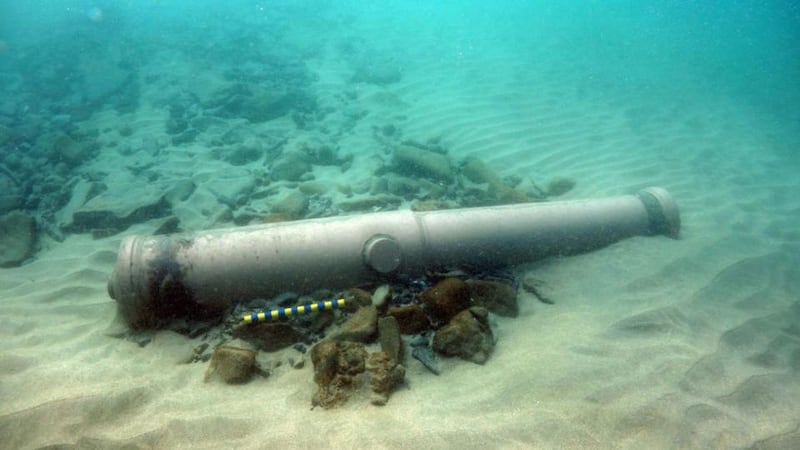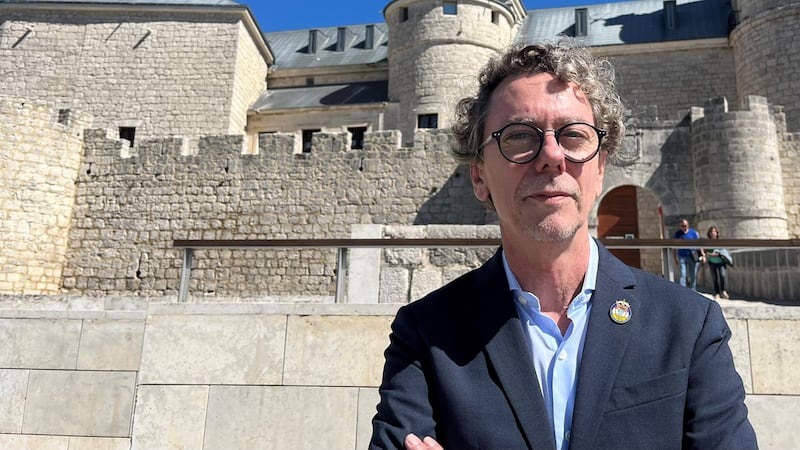Thousands of people took to the streets of Valladolid, Spain, last weekend for the mock funeral of Red Hugh O’Donnell who was buried in a monastery there in 1602.
At the time of his death the Irish Confederacy of Gaelic chieftains led by the O’Donnell and O’Neill families were in an alliance with the Spanish fighting the English.
The attempt by the Spanish to come to the aid of the Irish ended in disaster at the Battle of Kinsale in early 1602. The Spanish garrison of about 2,500 men were hemmed into the town by the English and defeated. Red Hugh fled to Spain but died in September 1602 awaiting a second audience with King Philip III who he hoped to persuade to send another expeditionary army to Ireland.
The mock funeral, now in its third year, is a celebration of the historic links between Spain and Ireland, but there is a darker side to that history as outlined at a conference on the Spanish Armada in Grange, Co Sligo, this weekend.
RM Block
Twenty-four ships of the Armada were lost off the coast of Ireland as they attempted to take the long way around Scotland and Ireland back to Spain to avoid a confrontation with the English fleet in the English Channel.
The National Moments Service hosted a joint conference with its Spanish counterpart that highlighted the work being carried out on the wrecks of the La Juliana, La Lavia and Santa Maria de Visón which sunk off Streedagh Beach in Co Sligo in September 1588.

Of the 3,000 Spanish taken prisoner after the Armada, 1,600 were taken prisoner in Ireland. Of those, 1,100 were summarily executed, according to Spanish author Petro Luis Chinchilla.
His book, published only in Spanish, Los Prisioneros de la Armada Invencible (the Prisoners of the Invincible Armada), tells for the first time the individual stories of those who were taken prisoner. He gave a presentation to Irish visitors to Simancas Castle last weekend and also this weekend to the Co Sligo conference.
Those who were taken prisoner in England, Scotland or the modern-day Netherlands were, for the most part, treated humanely or ransomed, many returning to Spain or the Spanish Netherlands at the time.
The ones who washed ashore in Ireland faced a grim fate. There were only around 1,000 English soldiers stationed in Ireland at the time. Lord Deputy William FitzWilliam and Lord President Richard Bingham feared that they would overwhelm the small English garrison and ordered that they be systematically executed.
Hundreds were killed in Galway Gaol and Drogheda Gaol. Some didn’t get as far as a jail. This included 300 men of the La Trinidad Valencera. The ship was wrecked off the Inishowen Peninsula and the survivors were slaughtered by English and Irish mercenaries under the command of Richard and Henry Hovenden after they had surrendered.
This happened in the domain of Red Hugh’s father, Hugh snr. Mr Chinchilla posits that Hugh snr and his wife, Inión Dubh, allowed the massacre to take place. “We can safely say that the deaths of some 300 men of the navy were, if not caused, at least permitted by Hugh O’Donnell,” he stated.
Other clans such as the O’Malleys of Clare Island or the Burkes of Ardnaree in Mayo were openly involved in mass murders of those Spanish shipwrecked, though a few, such as Brian O’Rourke of Co Leitrim, helped the Spanish. He was later hanged, drawn and quartered in London.

Among those given a human face for the first time is a Cordoban sailor Antonio de Ulloa y Sandoval who writes from Galway Gaol and asks for Masses to be said for his soul. He was unable to write his will because his jailer would not give him any more paper.
The renewed interest in the Spanish Armada and its fate in Ireland also features in a new book by the historian Michael Barry entitled 1588 The Spanish Armada and the 24 Ships Lost on Ireland’s Shores.
The Spanish, he suggested, were victims of the “curious mix of greed, self-interest and survival adopted by the Gaelic lords along the remote coasts of Ireland, as Tudor control encroached to envelop them”.
Mr Barry concluded that Ireland, undergoing English colonisation at the time, was a location “where Englishmen developed techniques of bloody subjugation and settlement which was to stand them in good stead later on when the colonisation of North America began. Opportunities for advancement had attracted ruthless men to take up the reins of power”.













